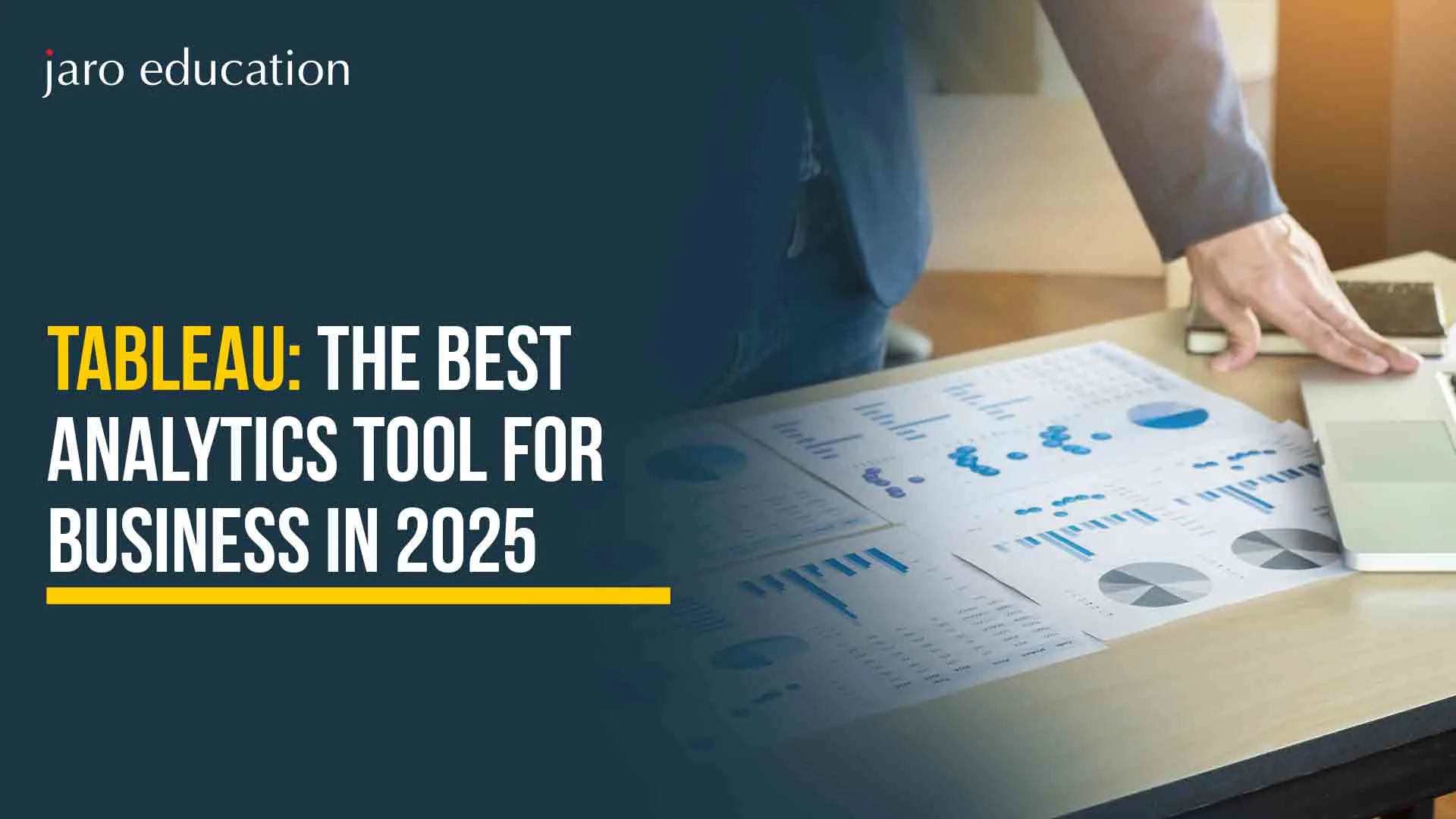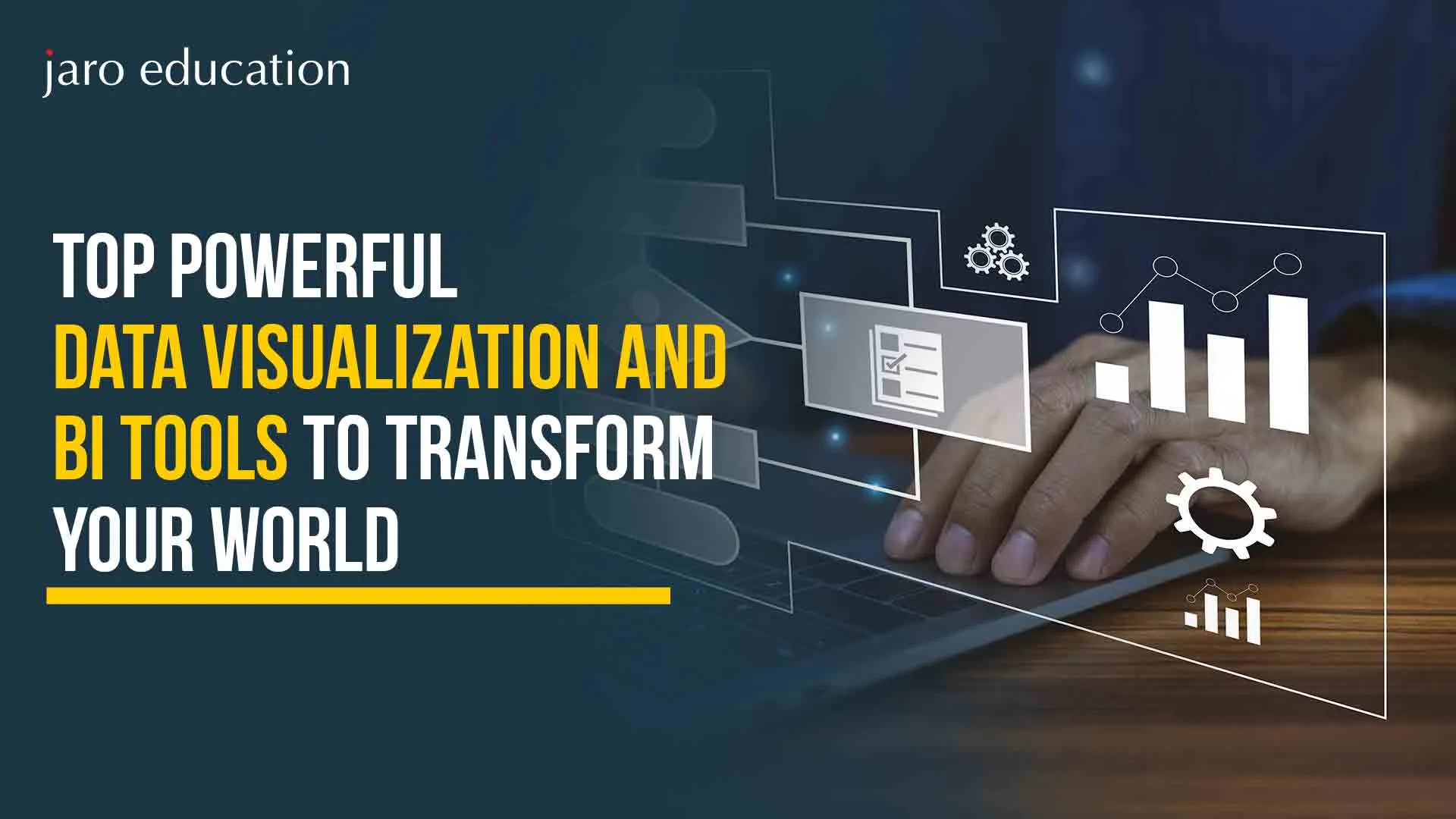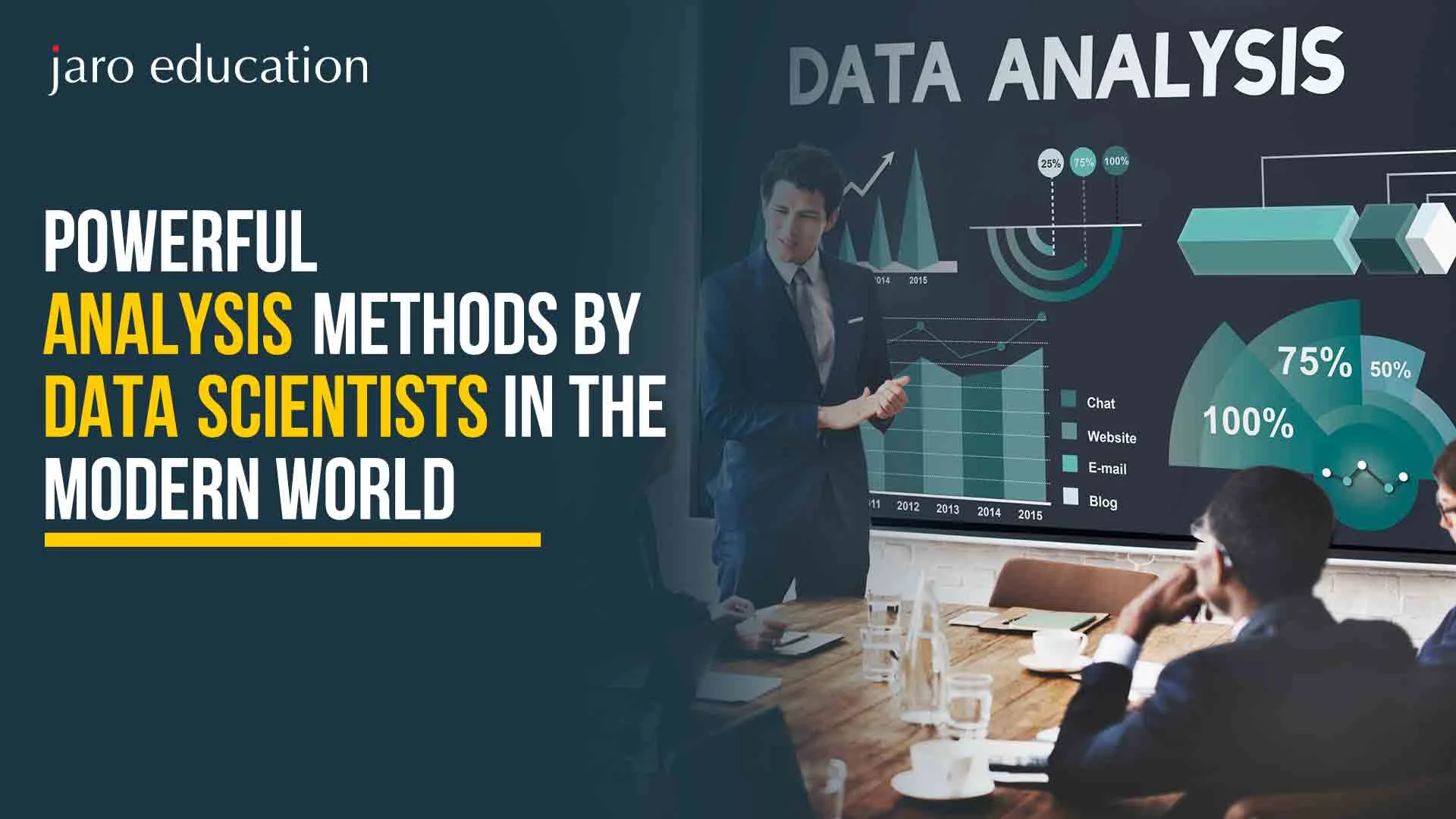Insights for Global Trends in Business Analytics
Table of Contents

If we think back over the last 10 years, the role and significance of analytics and data have changed dramatically. It has evolved from a transactional role—implementing decision-making— to the engine of decision-making. For example, it is estimated that by 2025, the worldwide data analytics market will grow to more than $140 billion amid the ongoing digital revolution.
Clearly, in an increasingly connected world, it’s time for organizations to push for more real-time and scalable insight. Moreover, in an environment of ethical AI considerations and practices, the task is higher.
This year, it seems, is going to be the year of transformation, where edge technologies and creative use cases are going to change how we think about data. In this blog, we are going to explore the trends that, while helping us define the future of business analytics, we can deem as the new future of analytics. How they see its future, its relevance, and how organizations can prepare themselves and take the first steps in a fast-changing landscape. Let’s get moving!
The Evolution of Business Analytics
Before we get into what the future of business analytics and its trend is, we should take a moment to note how business analytics has evolved. Business analytics was previously mostly facilitated by data scientists and IT departments. As the amount of data has grown over the last few decades and technology has accepted our daily activities, we noticed the inclusion of analytics as part of the day-to-day business activities.
Now business analytics takes on many shapes: descriptive analytics – what happened; diagnostic analytics – why it happened; predictive analytics – explains what to expect in the future; and prescriptive analytics – tells the user what actions to take to achieve a desired outcome. This progression leads us away from the reporting elements of data and to decisions made in an impactful, forward-leaning posture.
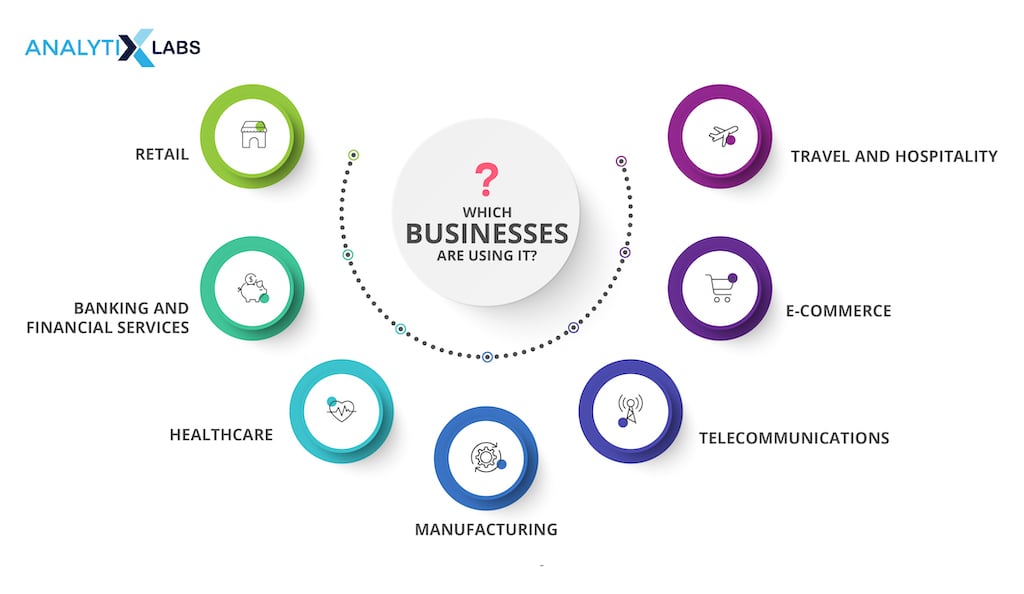
*analytixlabs.co.in
Current Trends in Business Analytics
As businesses increasingly rely on data-driven strategies, current trends in business analytics highlight the shift toward real-time insights and user-friendly tools. From the rise of self-service analytics platforms to the integration of AI and machine learning, let’s explore some of the hidden trends that you must know as a business analyst:
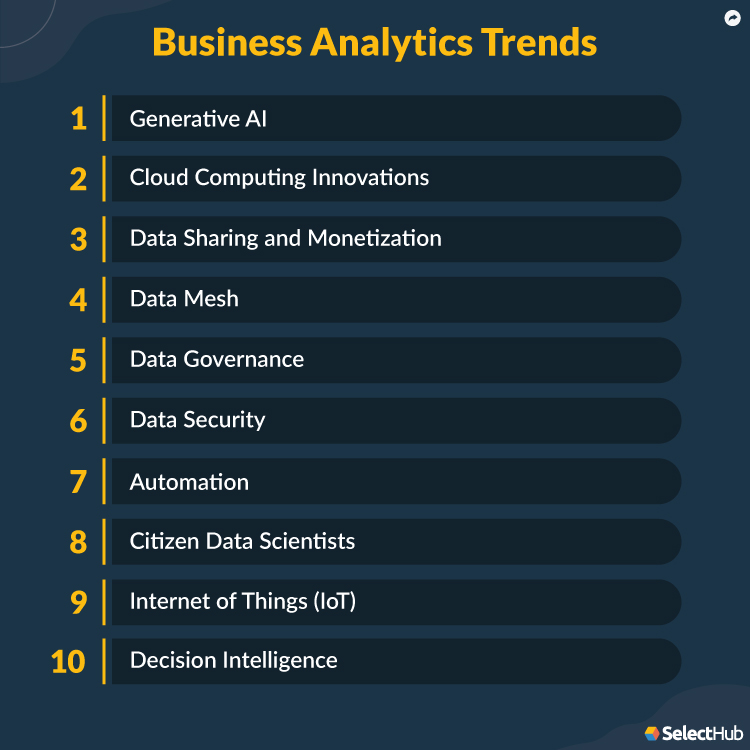
*selecthub.com
1. Agentic AI: The Rise of Autonomous Systems
Agentic AI, where the automated system can independently analyze everything rather than relying on the supervision of consultants with human intelligence, is one of the most impactful trends in business analytics. Traditional AI typically emphasizes human intervention and governing intervention, but agentic AI does not require oversight and works independently of humans. Because organizations can use agentic AI, this trend enables organizations to automate aspects of their businesses, decreasing effort and time to complete a process.
For instance, Google is testing using agentic AI to automate data workflows to accelerate insights and spend less time working on manual labor. Whereas the average data scientist may only be able to analyze a wide range of data on several large-scale projects, an autonomous agentic process can analyze extensive data collections and simultaneously drive multi-brand innovation. The future of business analytics allows organizations to react to changes in the marketplace more quickly and allows them to consider more data in their analysis.
2. Quantum Computing: A Game Changer for Analytics
Quantum computing is another exciting field of business analytics that has the potential to transform business analytics. Using the principles of quantum mechanics, these advanced applications can solve complex optimization processes faster than is currently possible. The ability of quantum computing to evaluate multiple parameters simultaneously will be of particular benefit for industries such as finance and logistics, where decisions are dependent on complex data sets.
As a case in point, envision a logistics company leveraging quantum computing to optimize delivery truck routes. By processing innumerable variables simultaneously, businesses can drive down costs and create efficiencies never before envisioned!
3. Augmented and Virtual Reality (AR/VR) in Analytics
AR and VR technologies are transforming data visualization, making insights more interactive and understandable. Businesses can now overlay data trends onto physical environments, providing a more immersive experience for stakeholders.
For example, real estate firms can use AR to showcase market trends in specific locations, allowing potential buyers to visualize data in real time. The future of business analytics with innovative approaches not only enhances comprehension but also facilitates more informed decision-making.
4. Data Privacy and AI Governance
As companies accumulate more data, the responsible and compliant use of that data is of utmost importance. As we enter 2025, we see the need for organizations to take the lead in terms of their data governance practices to establish trust with consumers. This means operating within regulatory frameworks such as GDPR and CCPA and having fair and unbiased AI models.
Let’s understand: we see that financial institutions are leveraging blockchain protocols to protect their transactions and improve customer privacy. In a world driven by transactions, blockchain provides a reliable, encrypted path for data ownership – importantly, patients or consumers always retain ownership of their data. Blockchain provides decentralized data ownership, which assists organizations with data compliance, and in doing so, organizations also improve their data integrity while strengthening consumer transparency and trust. This is one of the most important trends in the future of business analytics that we are experiencing, and it holds a promising future.
5. Democratization of Analytics
Gone are the days when analytics was solely the domain of data experts. The socialization of analytics made analytics available to not just data specialists but to employees throughout the organization, allowing everyone to make informed decisions based on data. No-code and low-code tools and platforms now allow individuals to create dashboards and visuals without coding skills.
Self-service analytics platforms allow teams to consume data and analyze it in a self-reliant group setting, which creates an environment for collaboration and informed decision-making. However, it is also important that companies provide training and oversight to help mitigate the risk of data misinterpretation by individuals who are not data experts.
6. Predictive and Prescriptive Analytics
The transition to proactive strategies is a defining hallmark of contemporary business analytics and is another popular trend in the future of business analytics. Predictive analytics models enable businesses to understand risks and opportunities from past behavior, while prescriptive analytics provides recommendations to enable the business to operate more efficiently.
For example, a retail company may be able to use predictive analytics to anticipate consumer buying patterns during busy seasons, therefore allowing them to effectively manage their inventory. This head start can lead to improved consumer satisfaction and reduced operational costs.
7. Real-Time Analytics
In a world where speed is crucial, real-time analytics has become essential. Organizations are increasingly adopting tools like streaming data processing and edge computing to analyze data as it arrives, enabling instantaneous decision-making.
For example, platforms like Apache Kafka, one of the emerging trends in business analytics, allow businesses to process live data streams, providing insights that can immediately influence operational strategies. This capability is particularly valuable in industries like e-commerce, where real-time data can drive marketing campaigns and inventory management.
In a world where speed is crucial, real-time analytics has become essential. Organizations are increasingly adopting tools like streaming data processing and edge computing to analyze data as it arrives, enabling instantaneous decision-making.
For example, platforms like Apache Kafka, one of the emerging trends in business analytics, allow businesses to process live data streams, providing insights that can immediately influence operational strategies. This capability is particularly valuable in industries like e-commerce, where real-time data can drive marketing campaigns and inventory management.
The Future Outlook of Business Analytics
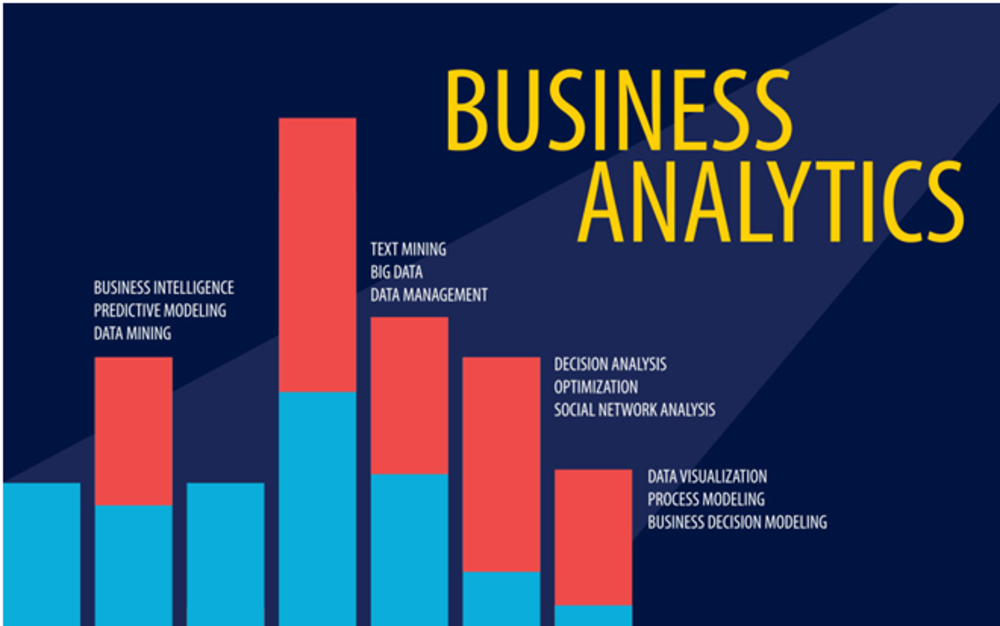
*linkedin.com
As we look ahead to 2025, the future of business analytics is exceptionally promising. With the exponential growth of data and advances in technology, the role of analytics will continue to expand. Businesses will rely more on predictive and prescriptive analytics, driven by artificial intelligence and machine learning, to derive deeper insights and foster innovation.
Increased Adoption of AI and Machine Learning
The maturation of machine learning technology is leading to a significant expansion in the capabilities of artificial intelligence within business analytics. Organizations are beginning to leverage sophisticated machine learning models to enhance prediction accuracy across various domains.
This means that businesses can make more informed decisions based on data-driven insights. Moreover, these advancements are automating many workflows traditionally required for complex decision-making processes.
By taking over repetitive tasks, AI allows analysts to shift their focus to more strategic initiatives that require human insight and creativity. The result is a more efficient work environment where data analysis is not just faster but also more impactful.
Enhanced Data Democratization
Another significant trend is the democratization of analytics. This movement is empowering employees at all levels to engage with data and make informed decisions.
As organizations invest in user-friendly tools, analytics become more accessible, enabling non-technical staff to interpret and analyze data effectively. This shift means that everyone, from marketing teams to operational staff, can leverage data insights to drive their strategies.
The result is a more collaborative and informed decision-making process, fostering a culture of data literacy throughout the organization. As analytics becomes a common language within companies, the potential for innovation and improvement grows exponentially.
Greater Emphasis on Ethical Considerations
As analytics become more integrated into business operations, ethical considerations are taking center stage. Organizations must navigate the complex landscape of data privacy and ethical AI usage. With regulations continually evolving, companies need to establish clear guidelines on how they collect, use, and share data, ensuring they respect individuals’ rights.
This focus on ethics is not just about compliance; it’s also about building trust with customers and stakeholders. Companies that prioritize ethical practices in their analytics will likely gain a competitive advantage, as consumers increasingly prefer organizations that demonstrate a commitment to responsible data usage.
Integration of Advanced Technologies
Finally, the integration of advanced technologies such as blockchain, quantum computing, and augmented/virtual reality (AR/VR) is poised to revolutionize business analytics.
These innovations can enhance data security, improve processing speeds, and provide immersive data visualization experiences.
For instance, blockchain can ensure data integrity and transparency, while quantum computing can solve complex problems at unprecedented speeds. AR/VR technologies can transform how data is visualized, making insights more interactive and easier to understand.
Conclusion
The future of business analytics is changing rapidly. Companies will be successful if they are able to harness data for the purposes of becoming more competitive, adapting to the changing environment, and discovering new opportunities.
Companies that are investing in the right technologies and promoting a culture of continuous learning will be able to successfully navigate the constantly changing complexities of the evolving landscape around analytics.
If you’re looking to thrive in this rapidly evolving field, consider pursuing formal education in business analytics. Programs like the M.Sc. in Business Analytics from Manipal Academy of Higher Education equip you with the skills and knowledge needed to excel in data-driven decision-making. You can enroll in this course through Jaro Education, which offers comprehensive support and flexible learning options to help you balance your studies with other commitments.
The future of business analytics is not just about data; it’s about using that data to drive meaningful change. As we embrace these insights and trends, let’s prepare ourselves to lead in a world where data reigns supreme.
Frequently Asked Questions
Is business analytics in demand?
Yes, the future of business analytics is in high demand as organizations increasingly rely on data-driven insights to make informed decisions and gain a competitive edge.
How is AI altering the business analytics landscape?
AI is transforming the business analytics landscape by automating data analysis, providing predictive insights, and enabling more advanced and real-time decision-making processes.
What is the role of data governance in analytics?
The role of data governance in analytics is to ensure data quality, accuracy, security, and compliance, thereby providing a reliable foundation for meaningful and trustworthy analytics insights.
What are the four pillars of business analytics?
The four pillars of business analytics are descriptive analytics, diagnostic analytics, predictive analytics, and prescriptive analytics.












